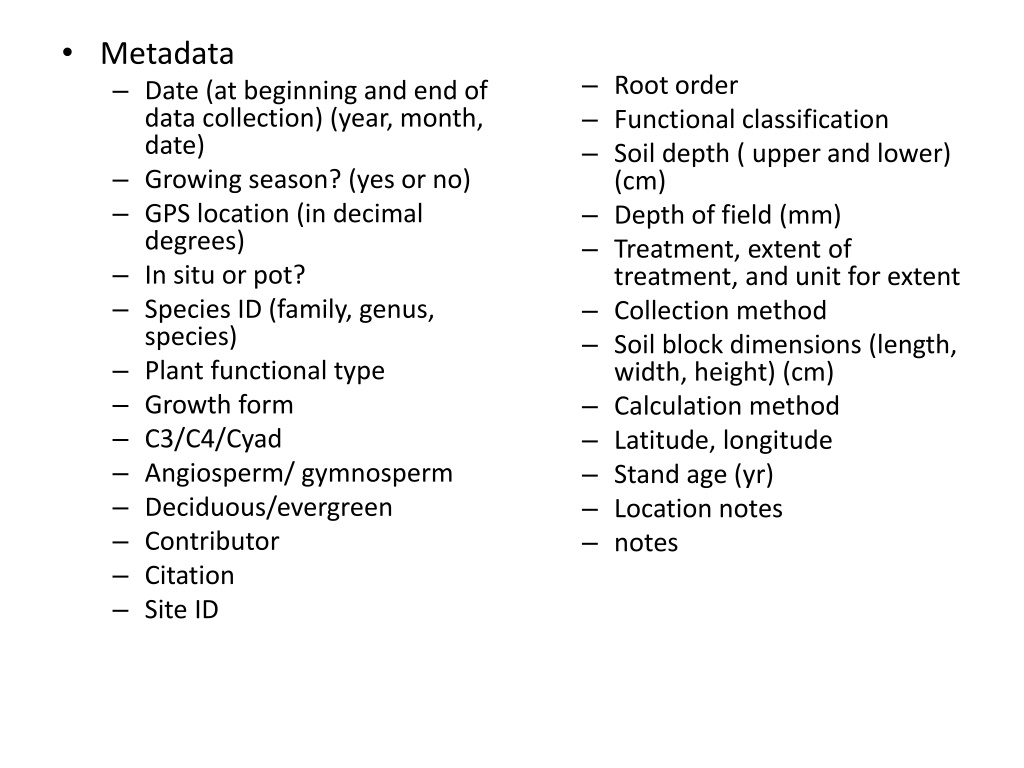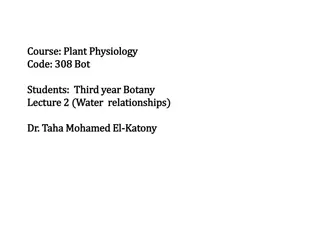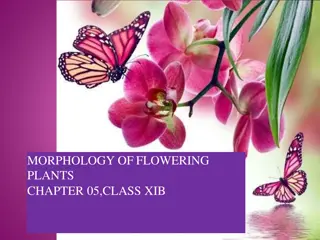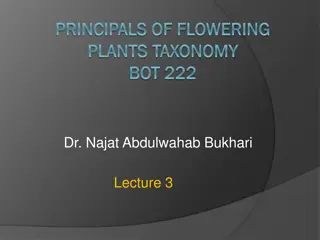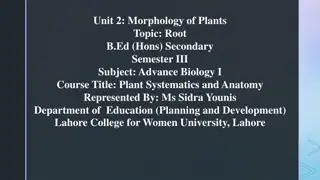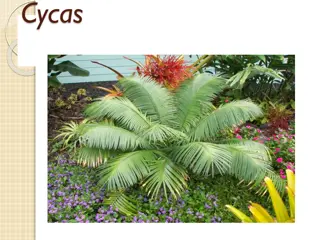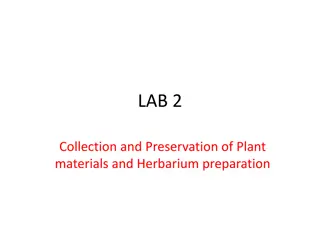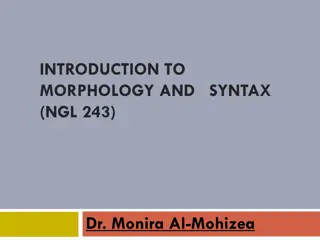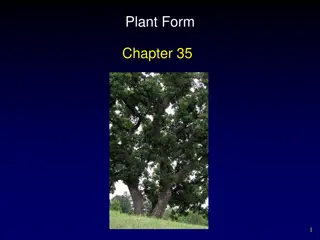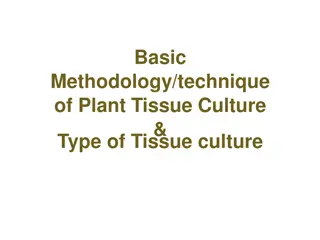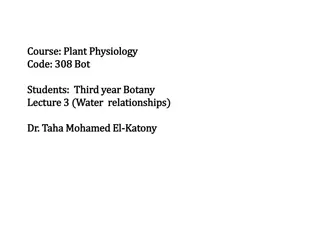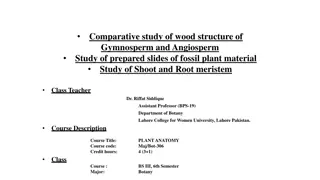Root Morphology and Chemistry Data Collection in Plant Study
This dataset includes detailed metadata on root characteristics, such as diameter, branching intensity, mycorrhizae type, along with root chemistry data like nutrient concentrations and stable isotopic values. Soil dynamics, including temperature and texture, and climate information are also documented. A comprehensive resource for studying plant-root interactions and ecosystem dynamics.
Download Presentation

Please find below an Image/Link to download the presentation.
The content on the website is provided AS IS for your information and personal use only. It may not be sold, licensed, or shared on other websites without obtaining consent from the author. Download presentation by click this link. If you encounter any issues during the download, it is possible that the publisher has removed the file from their server.
E N D
Presentation Transcript
Metadata Date (at beginning and end of data collection) (year, month, date) Growing season? (yes or no) GPS location (in decimal degrees) In situ or pot? Species ID (family, genus, species) Plant functional type Growth form C3/C4/Cyad Angiosperm/ gymnosperm Deciduous/evergreen Contributor Citation Site ID Root order Functional classification Soil depth ( upper and lower) (cm) Depth of field (mm) Treatment, extent of treatment, and unit for extent Collection method Soil block dimensions (length, width, height) (cm) Calculation method Latitude, longitude Stand age (yr) Location notes notes
Morphology Root diameter (mm) Specific root length (SRL) (m g-1) Root tissue density (RTD) (g cm-1) Branching intensity (# roots per higher order root) Branching architecture (root length per higher order root) Type of mycorrhizae (AM or EM) % EM colonization (% tips colonized) % AM colonization (% length colonized) Anatomy Stele diameter ( m) Cortex diameter ( m) Root porosity (aerenchyma area) Vessel diameter ( m) Phellem Standing Biomass Absolute biomass (g m-2) % total biomass (by order, diameter, and functional class) Annual production (g m-2) Annual mortality (g m-2 year-1) Biomass turnover (g m-2a-1)
Chemistry Root C, N, K, P, Al, Ca, Mg (mg g-1) Root Cr, Ni, Cu, Zn, As, Cd, Pb (mg kg-1) C:N ratio C storage (kg C hm-2) Ion concentration (Na+and Cl-) (mg g d.wt-1) Lignin Cellulose Hemi-cellulose Carbohydrates (TNC)(mg g-1) Isotopic concentration Mean root stable 15N (%) Dynamics Survivorship (roots year-1) Growing season survivorship (% growing season-1) Phenology production Phenology mortality Lifespan (days) Turnover rate (% growing season-1) Function Respiration rate (nmol O2g-1s- 1) Respiration rate by mass (nmol s-1m-2) Nutrient uptake Water uptake Exudate rate Oxygenation rate Enzyme production Conductance
Soil dynamics Soil temperature ( C) Volumetric soil water content (%) Oxygen availability Soil respiration Mineralization rate Soils pH Textural class Soil horizon % sand, silt, clay, and SOM Bulk density (g cm-3) Soil N and P (g kg-1) Al:Ca ratio Cation exchange capacity (CEC) (meq cg-1) % base cation saturation Elemental concentration (total and exchangeable) Redox potential (mV) Climate Mean annual precipitation (mm) Min & max monthly temperature ( C) Mean annual temperature ( C) Chamber temperature (day, night) ( C) Other site characteristics Elevation (m above sea level) Slope ( ) Vegetation Basal area (total and by species) LAI (total and by species) Photosynthesis
